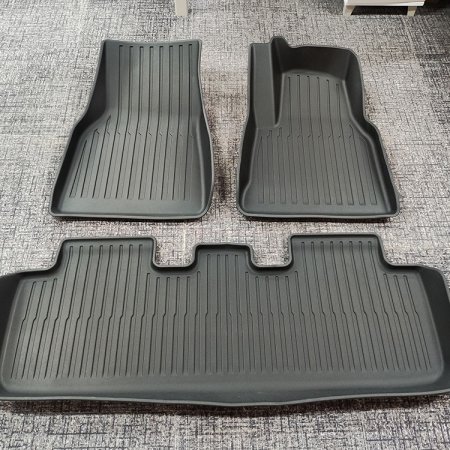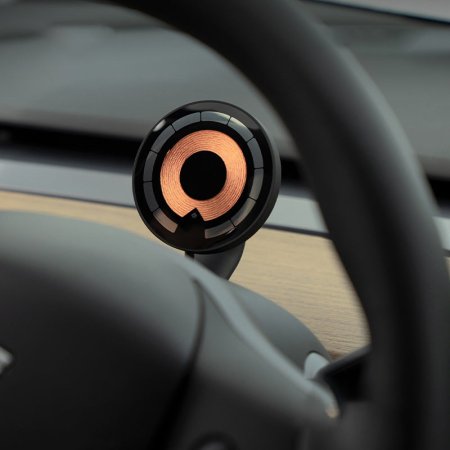Owning a Tesla is about more than just getting from point A to point B; it’s about embracing a combination of elegant design, cutting-edge technology, and an extraordinary driving experience. But as time passes, you may start to notice something a little less extraordinary—those sleek black trims on your vehicle, once a shining detail, begin to fade, discolor, or lose their original vibrancy. This issue, though surprisingly common, has some clear causes behind it. The silver lining? There are practical ways to prevent it and keep your Tesla looking as sharp as the day you drove it off the lot.
So, why do Tesla’s black trims lose their luster over time? How does this fading process unfold, and what steps can you take to safeguard the car’s polished, modern look? Let’s dive into these questions and uncover the secrets to preserving your vehicle’s aesthetic appeal.
Why Tesla’s Black Trims Fade Over Time
1. UV Exposure: The Sun’s Quiet Influence
One of the primary reasons your Tesla’s black trims lose their luster over time is UV exposure. The sun’s ultraviolet rays, while invisible, have a powerful effect. Gradually, they trigger a process known as oxidation, which causes the trim’s deep black color to fade and become discolored.
How it happens: The UV rays break down the chemical bonds in the plastic or paint coating of the trim. As this occurs, the trim’s original richness starts to weaken, leaving behind a dull, chalky appearance. This effect is particularly noticeable when your car is regularly parked under the harsh sun, with little to no shelter or shade.
2. Oxidation: The Slow Fade of Time
Oxidation is a natural, albeit relentless, chemical process that occurs when oxygen interacts with surfaces such as plastic or metal. Over time, this exposure erodes the trim’s original luster, diminishing its rich color and smooth finish.
What actually happens: As your Tesla’s black trim endures constant contact with air and moisture, a subtle transformation begins. Gradually, a hazy, whitish film may appear—an early sign of surface oxidation. While this process is inevitable to some extent, the good news is that it can be delayed. Routine maintenance and protective treatments can greatly extend the life and look of your trim.
3. Environmental Contaminants: The Silent Saboteurs
The open road may be thrilling, but it’s also filled with unseen threats to your car’s exterior. From acidic bird droppings to sticky tree sap, gritty road salt to residue from polluted rain, your Tesla’s black trim is under constant siege.
Here’s how damage sets in: These environmental pollutants do more than just sit on the surface. Many trigger chemical reactions that degrade the material, leading to staining, fading, or even permanent etching. Left untreated, what starts as a minor blemish can evolve into lasting damage. Regular cleaning, paired with protective coatings, acts as a vital line of defense, keeping your trim looking bold, clean, and as sharp as ever.
4. Improper Cleaning: When Care Turns Counterproductive
Washing your Tesla regularly is crucial for upkeep, but if done carelessly, it can do more damage than good. Harsh detergents, stiff brushes, or abrasive cloths—common in many automatic car washes—can strip away protective coatings and wear down the surface of your trim faster than you’d expect.
How damage builds: With time, improper cleaning methods can degrade the finish, leaving the trim looking dull, patchy, or uneven in tone. The irony? In trying to preserve your car’s sleek appearance, you may be accelerating its decline, especially if you’re not using mild, pH-balanced products made specifically for automotive surfaces.
5. Material Degradation: The Slow March of Time
No matter how refined or advanced the design, Tesla’s black trim components—often crafted from plastic, rubber, or metal—are not immune to the inevitable effects of aging. Exposure to the elements, fluctuating temperatures, and general wear can take their toll.
The breakdown: Plastic trims tend to dry out and become brittle, eventually cracking or fading. Rubber components may stiffen and lose their elasticity, leading to shrinkage or surface cracking. Even anodized aluminum, known for its sleek, durable finish, can fade from a rich black to a muted, worn-out gray over time. It’s a gradual process—but without consistent care, it’s one that’s difficult to undo.
How to Maintain the Bold, Black Shine of Your Tesla’s Trims
While it’s true that discoloration is a natural part of your vehicle’s aging process, that doesn’t mean you have to resign yourself to a dull, faded look. With a little extra care, you can slow the inevitable and preserve that sharp, pristine appearance for years to come. Here’s how to keep your Tesla looking as sleek as the day you got it:
1. Shield Your Trim with UV Protectants
Sunshine is an unstoppable force, but you don’t have to let it ruin your trim. By regularly applying a high-quality UV protectant or wax made specifically for vehicle surfaces, you create an invisible defense that blocks harmful ultraviolet rays. It’s like giving your car sunscreen—simple to apply, but powerful enough to protect over time, staving off oxidation and fading.
2. Clean with Care—But Use the Right Tools
Dirt, tree sap, road grime—these elements don’t just sit on the surface. They start wearing down your trim, bit by bit. Regular, careful cleaning with a mild, pH-balanced soap and soft microfiber cloths can help eliminate these contaminants before they cause lasting damage. Avoid using abrasive brushes or harsh chemicals—those can scratch, strip, and harm the very finish you’re trying to protect.
3. Level Up with Ceramic Coating for Robust Protection
For those looking to give their Tesla’s trim an extra layer of defense, consider ceramic coatings. This advanced solution bonds to the surface, creating a protective hydrophobic layer that resists UV rays, moisture, and environmental pollutants. This not only reduces the risk of discoloration but also makes cleaning easier down the road. And if you want to save some money, check out our DIY ceramic coating kit—professional-grade protection without the steep price tag.
4. Seek Out Shade (Or Use a Car Cover)
Whenever possible, park your Tesla in the shade. A garage, carport, or even a tree can work wonders in reducing your car’s exposure to harsh UV rays. The less sunlight, the less fading. If that’s not an option, consider investing in a high-quality car cover to protect the trims from unnecessary sun damage. It’s an easy fix that can help maintain your car’s luster.
5. Keep It Covered with PPF Wraps (Paint Protection Film)
If you’re looking to simplify the process, a PPF wrap could be your best friend. Our DIY PPF kits for the Tesla Model 3 and Model Y are precision-cut for a perfect fit, designed to blend seamlessly with your original satin black trims. The matte finish looks just like the factory finish, but it’s a tough, protective shield against scratches, fading, and the wear and tear of the road. The best part? It’s easy to install with a step-by-step video guide—no professional help required!
Conclusion: Preserving Your Tesla’s Timeless Shine
Black trims are bound to experience some fading over time, thanks to unavoidable culprits like UV rays, oxidation, pollutants, improper cleaning, and the natural wear of materials. But don’t fret—there are plenty of steps you can take to combat these forces and keep your Tesla looking like new. Consistent care, the right protective products, and shielding your car from harsh environments will go a long way in preserving that fresh, sleek appearance.
By understanding why the fading occurs and knowing the best ways to prevent it, you can keep your vehicle’s design sharp, its finish flawless, and its value intact for years to come.











